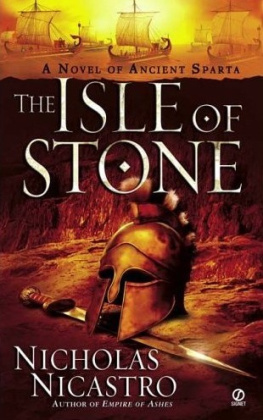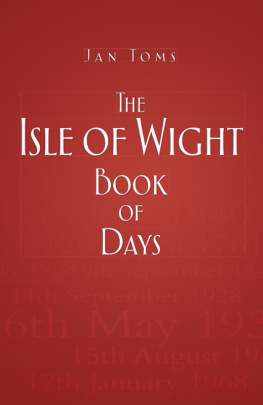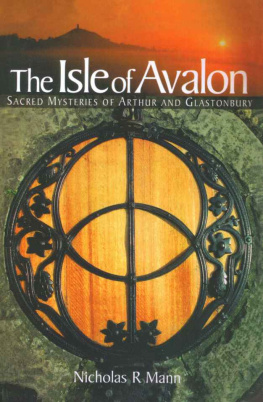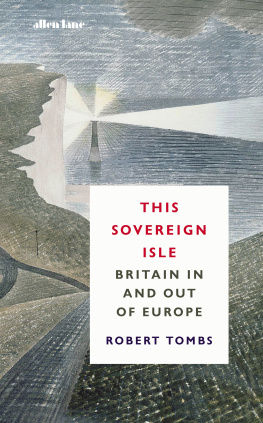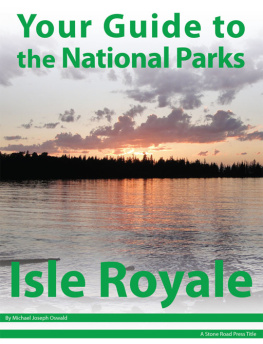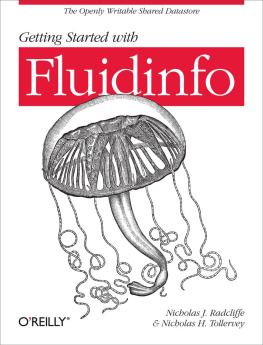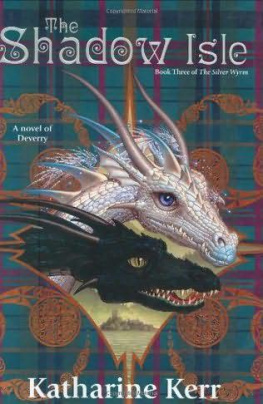Nicholas Nicastro - The Isle of Stone
Here you can read online Nicholas Nicastro - The Isle of Stone full text of the book (entire story) in english for free. Download pdf and epub, get meaning, cover and reviews about this ebook. genre: Adventure. Description of the work, (preface) as well as reviews are available. Best literature library LitArk.com created for fans of good reading and offers a wide selection of genres:
Romance novel
Science fiction
Adventure
Detective
Science
History
Home and family
Prose
Art
Politics
Computer
Non-fiction
Religion
Business
Children
Humor
Choose a favorite category and find really read worthwhile books. Enjoy immersion in the world of imagination, feel the emotions of the characters or learn something new for yourself, make an fascinating discovery.

- Book:The Isle of Stone
- Author:
- Genre:
- Rating:3 / 5
- Favourites:Add to favourites
- Your mark:
- 60
- 1
- 2
- 3
- 4
- 5
The Isle of Stone: summary, description and annotation
We offer to read an annotation, description, summary or preface (depends on what the author of the book "The Isle of Stone" wrote himself). If you haven't found the necessary information about the book — write in the comments, we will try to find it.
The Isle of Stone — read online for free the complete book (whole text) full work
Below is the text of the book, divided by pages. System saving the place of the last page read, allows you to conveniently read the book "The Isle of Stone" online for free, without having to search again every time where you left off. Put a bookmark, and you can go to the page where you finished reading at any time.
Font size:
Interval:
Bookmark:
The Isle of Stone
Nicholas Nicastro
Historical Note
The Peloponnesian War was the war to end all wars in antiquity: a conflict of unprecedented scope, length, and destructiveness, after which nothing was the same. Fought over a period of twenty-seven years, it pitted Athens and her sometimes-reluctant imperial subjects against a league of Peloponnesian states led by Sparta. This novel dramatizes one of the wars key campaigns-the entrapment and siege of hitherto undefeated Spartan soldiers on a narrow island in the west of Greece. The incident turned out to be a high point of the struggle for the Athenians, who still lost the war.
Readers unfamiliar with this subject may be confused by the varying ways the ancients referred to the Spartans and their allies (Lacedaemonians, Laconians, Peloponnesians, Spartiates, Equals, et al). By way of clarification, Lacedaemon and Laconia are alternative names for the fertile valley region in the southern Peloponnese that encompassed the city of Sparta. Although all Lacedaemonians were Peloponnesians, the region of the Peloponnese included a number of other important city-states that were part of the Spartan bloc. Describing a force as Peloponnesian therefore emphasizes a preponderance of Spartan allies within (though at least some Spartans were usually part of such armies or fleets).
The term Spartiate is a more restrictive one than Lacedaemonian. It refers to those adult males in the Spartan population who attained the status of full citizenship by completing the requisite course of education (the agoge or Rearing), being elected to a communal mess, and attaining the age of thirty. The number of full-blown Spartiates amounted to only a small minority in the city population and the army. This shortage of elite manpower obligated the state to accept into service noncitizen Lacedaemonians, including resident aliens called perioikoi (circum-habitants, here designated as Nigh-Dwellers), ex-citizens stripped of their citizenship for conduct or financial reasons, and, in extreme circumstances, state slaves (helots) who served in exchange for their freedom. Spartiates referred to one another as homoioi, which I follow certain authorities in translating as Equals. Those who had graduated from the agoge, but were not yet thirty years old, belonged in an informal age-class called the hebontes (rendered here simply as under-thirties).
The precise organization of the Spartan army has long been a subject of debate, including as it did a number of subdivisions that are unclear in nature and changed with time. For my purposes here I have remained agnostic on these questions. Since the names of the subdivisions are numerous and unfamiliar, I have opted to translate them into rough modern equivalents (e.g., platoon for the Spartan enomotia of thirty-six men, battalion for the lochos of one thousand, etc.). Similarly, the names of age-groups in the Rearing, which would have sounded archaic even to classical Greeks, have been changed here to the closest equivalents in American idiom: West Point class monikers (Firsties, Cows, etc.). My apologies to the purists.
A mixture of ancient and modern units of measure is used in the text. For the sake of convenience, modern units are used when they were more or less similar to their ancient counterparts (e.g., feet, hours, months). Verisimilitude has been served by including a number of antique units that are common in the relevant historical sources. Most prominent here is the stade, a Greek unit of distance approximately equivalent to six hundred modern feet (and from which the word stadium is derived).
The common monetary unit is the Athenian drachma, which is equivalent in value to six obols. The superordinate units are the mina, worth one hundred drachmas, and the talent, equaling six thousand drachmas. We know that a decent house in a suburb of Athens in the late fifth century BC would set the buyer back five hundred to one thousand drachmas (or five to ten minas); a gallon of olive oil, more than three drachmas; a good pair of shoes, about ten drachmas; a healthy adult slave, three hundred to five hundred. Still, for various reasons, expressing the value of a drachma in todays currency is not as straightforward as finding modern equivalents for, say, distance. According to an oft-cited rule of thumb, the wage for the average laborer in classical Athens was one or two drachmas a day. A talent, therefore, works out to the equivalent of almost twenty years of work, or in modern terms something like a million dollars.
As for the calendar, the reader will notice there are no absolute dates given for the events depicted here. This is due to the simple fact that no universal system existed until recent times (and arguably, does not exist even today, given that the Chinese, Muslim, and Jewish calendars are still in use). Instead, years were designated either by counting the years since some important event, or on the basis of who held important magistracies at that time (in Athens, years were named for the so-called eponymous archons). For instance, the historian Thucydides dates the beginning of the Peloponnesian War to the forty-eighth year of the priestess-ship of Chrysis at Argos, during the ephorate of Aenesias at Sparta and in the last month but two of the archonship of Pythodorus at Athens (2.2.1). This works out to the early summer of 431 BC by modern reckoning. The focal events of this book are the Great Earthquake in Laconia in 464 BC, and the battle at Pylos and subsequent siege of the island of Sphacteria, which took place over a seventy-two day period in the mid to late summer of 425 BC.
Finally, to help the reader navigate a plethora of similar-sounding Greek names, an index of characters is included at the back of the book.
The living are stretched bows, whose purpose is death.
- HeraclitusA Hush in the Brazen House
1.
In the early morning of her wedding day, Damatria went out to the privy hole behind her fathers house. She had just cut her hair in short, boyish style, in preparation for the traditional first-night visit from her betrothed. Squatting, she imagined the smell of Molobrus as he pressed down on her, reeking of the barracks, of swine blood and vinegar from the mess table. He would fumble down there, and she would need to guide him in the process of her deflowerment. How ignorant of women were the brave lads, who lived their youths naked on Taygetus but trembled, lost as lambs, in the foothills of the Mount of Venus! What responsibilities womanhood entailed, ruling these men of Sparta.
She was struck at once by a certain unsteadiness. After bracing herself against the ground, she realized it was the earth itself that was moving, not she. It was just a mild dislocation at first, as if she was perched on the wrist of a giant who was repeatedly clenching his fist. Then came a sick-making pulsation, wave upon wave, as if the earth became liquid. This went on for a few uncommonly vivid minutes, consuming her attention, until the waves ceased and she rose uncertainly to her feet, arms outstretched, as if expecting to plunge into the betrayed solidity below.
Her fathers house lay at the outskirts of the village of Mesoa. Where the structure had stood, there was now a cloud of plaster dust over a neat pile of debris. No houses stood intact anywhere she could see, though there were a number of other figures who were, like herself, standing unscathed. She met the gaze of the wife and mother who lived in the house next door; mute as a post, she was holding the handle of a broken water jug, her eyes reflecting a faint bemusement with the reordered landscape. The woman seemed not to register the interleaved walls of the house before her, where minutes before her infant had delighted in lifting his tiny head. Damatria looked to the skyline of Taygetus over the valley, ordinarily so comforting in its familiarity. This time, in a way she could not describe, even the mountain seemed changed.
Font size:
Interval:
Bookmark:
Similar books «The Isle of Stone»
Look at similar books to The Isle of Stone. We have selected literature similar in name and meaning in the hope of providing readers with more options to find new, interesting, not yet read works.
Discussion, reviews of the book The Isle of Stone and just readers' own opinions. Leave your comments, write what you think about the work, its meaning or the main characters. Specify what exactly you liked and what you didn't like, and why you think so.

